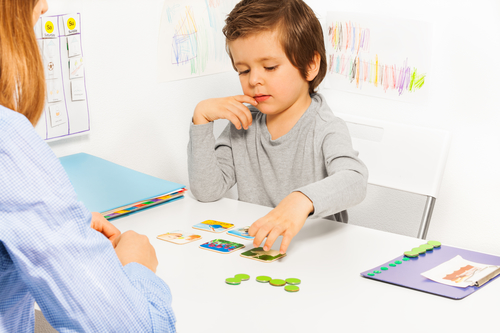As parents, you have expectations of improving your children’s behavior. Behavior analysts, on the other hand, need to make sure improvements in behavior occur within the Applied Behavior Analysis (ABA) guidelines.
These seven guidelines are called the defining characteristics of ABA:
1. Applied: ABA practices will change your behavior and/or your child’s behavior in ways that will to enhance and improve your lives. For example, if you choose thumb-sucking as a behavior to change, will life be improved for you and your child? The answer is yes, most likely, because your child will be healthier rather than putting germy fingers in their mouth.
2. Behavioral: The behavior chosen must be THE behavior in need of change and the behavior must be measured correctly. Think about the behavior of doing homework after school: All year, your child has complained about the hour of homework needed to complete. Now that it’s May, he is finally doing it without a battle! You want to celebrate because of the “new” behavior but, in actuality, it’s the work that has decreased due to the end of the year, not the behavior.
3. Analytic: The change in behavior should be measured. This is to ensure that the events controlled by the behaviorist are indeed what is actually changing. Using this “analysis” you will have your ‘ah-ha’ moment that your child still doesn’t want to do his homework.
4. Technological: Make sure everything is clearly defined so other behavior analysts and therapists can continue to work with the child. This will help make sure Grandma enforces the same rules as Mom does, because you have “clearly stated” what she should do when she babysits.
5. Conceptually Systematic: Procedures for changing behavior and any interpretations of how or why those procedures were effective. These procedures should be described in terms of relevant ABA principles. This is a fancy way to say that, as behavior analysts, we need to know how to critically speak about what we do in these textbook terms.
6. Effective: Behavioral techniques used should improve behavior. This seems to be a given, but therapists need to constantly revisit this one! If we are not making things better for you and your child than we need to stop and back up to #1. The key here is to improve lives.
7. Generality: The behavior change lasts over time and occurs in more than one environment with different people. If you finally get your child to put dirty clothes in the hamper, wouldn’t it be awesome for them to put their dirty tissue in the trash can? Or put a toy back on the shelf where it belongs? This is an example of generalization—we teach one behavior and it expands on its own into other areas.
Remember: help is not far away! A behavior therapist can always walk you through these steps to make life and behavior changes happen.
Did some of these remind you of a therapy or teaching session with your child?
by Megan Kunze, MA, BCBA
Sources:
Bear, D.M., Wolf, M.M., &Risley, T.R. (1968). Some current dimensions of applied behavior analysis. Journal of Applied Behavior Analysis, 20, 313-327.
Cooper, J.O., Heron, T.E., Heward, W.L. (2007). Applied Behavior Analysis (2nd Ed.). Upper Saddle, New Jersey: Pearson.
A graduate of Abilene Christian University, Jennifer had a long career in TV Broadcasting. Upon learning her oldest son Sam had a form of Autism called Asperger’s Syndrome, she left her career and became a full-time mother to both of her sons. Jennifer elicited the participation of her family and together they produced several independent programs including a children’s animated series titled Ameriquest Kids, as well as a documentary and book titled, Coping to Excelling: Solutions for School-age Children Diagnosed with High-Functioning Autism or Aspergers Syndrome. She formed the nonprofit Asperger101 to provide on-going free resources related to ASD at Aspergers101.com and has implemented the Texas Driving with Disability Program and continues to grow the statewide initiative today. She and her husband have recently retired to their property in the Texas Hill Country.



1 Comment